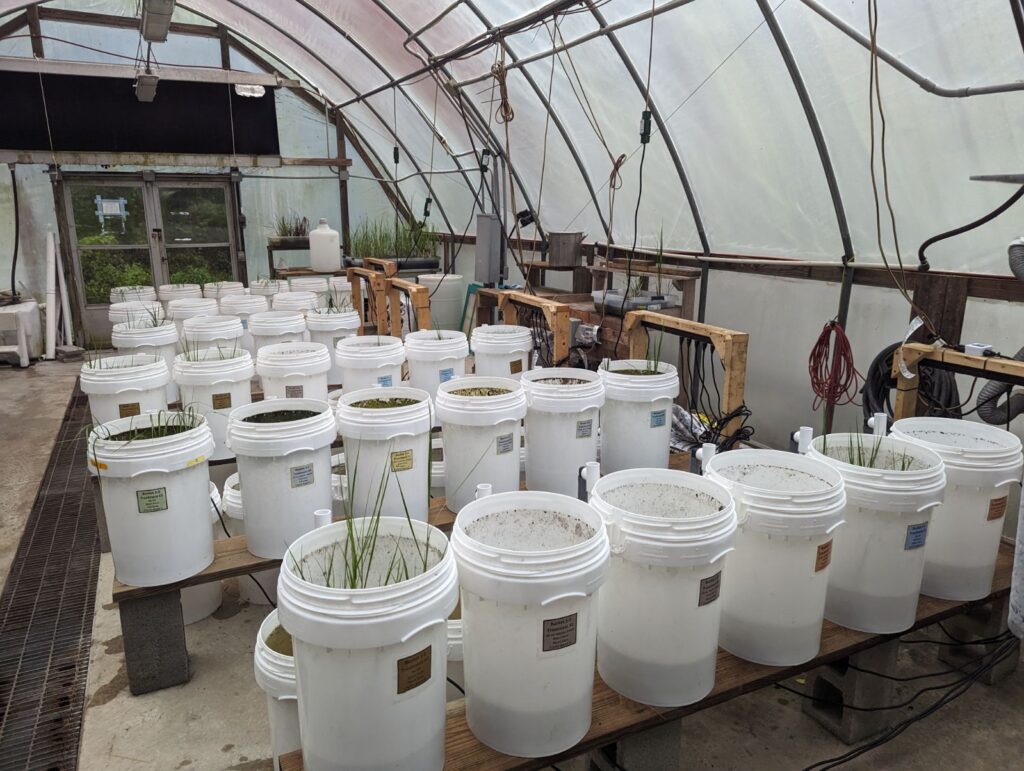
Marine-based oil spills are not an uncommon occurrence in the U.S. Worse still, they often occur near sensitive coastal areas that teem with aquatic life that people depend on for food and livelihoods. Even small spills — such as those that might occur by refueling a ship — can harm critical species.
To help assess the effects of oil spills on coastal environments, scientists are studying the effects of marine diesel fuel on two different genotypes of smooth cordgrass, Spartina alterniflora, and the first phase of this study is complete. A master’s student in the graduate program in Marine Biology at the College of Charleston worked with National Centers for Coastal Ocean Science (NCCOS) researchers to complete this three month study within Small Intertidal Microcosm Plant Exposure (SIMPLE) systems. Microcosms are artificial ecosystems scientists use to mimic a more simplified version of the natural environment to perform studies in a controlled setting, the ideal setting for this study. The researchers at NCCOS recently, along with input from the student, developed the SIMPLE system (a series of 12 gallon buckets each with their own water inflow) at the Hollings Marine Laboratory in Charleston, South Carolina to simulate a tidal system. This study was the debut of this system.

For this study, the team investigated the mortality and growth responses of each genotype (short form and tall form) under two different tidal regimes with and without oil. The team employed SIMPLE systems which allowed the scientists to perform short-term plant exposures using varying tidal patterns. Through the duration of the experiment, the researchers were able to drive the tidal cycle up and down within the buckets and at varying frequency: half of the systems received daily tides, while the other half only received weekly tides. In addition to plant mortality and growth, the team monitored biomass, chlorophyll a concentration, polycyclic aromatic hydrocarbon concentrations (PAHs), and hydrographic parameters (temperature, salinity, pH, and dissolved oxygen) during the three month study. The team is currently analyzing the data and will present the preliminary results at the upcoming Society of Environmental Toxicology and Chemistry meeting in Louisville, Kentucky this November.
Learn more about oil spill research at NCCOS and NOAA’s role in oil spills and response.
